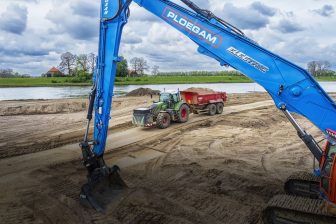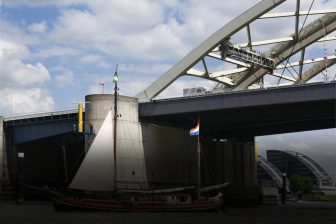New Oyster deal for rail passengers UK
London, United Kingdom – A deal that will help London’s rail passengers get the full benefit of Oyster cards and lay the foundations for a nationally accepted smartcard ticketing scheme has been struck.
The details of the announcement were set out by the new Transport Secretary, Douglas Alexander and London Mayor Ken Livingstone 2006-05-10. Transport for London has agreed to pay for Oyster validation equipment to be provided for all London rail stations in Zones 1 – 6. It is a significant breakthrough that offers train companies the opportunity to accept Oyster pay-as-you-go products on their services.
Transport for London has also agreed to work with the Department for Transport to ensure that all Oyster equipment is capable of accepting other smart cards. These are currently under development for use on public transport across the country by the Integrated Ticketing Smartcard Organisation (ITSO).
This is a further step towards the wider introduction of smart ticketing technology outside of London. It will allow the development of fully integrated ticketing systems in and beyond the Capital, extending the convenience and ease of smartcard technology to millions more passengers.
It builds on the Government’s decision to require bidders for the new South Western rail franchise to set out how a new smart ticketing system could be introduced across its franchise area from London to the South Coast.
Announcing the deal, Douglas Alexander the new Transport Secretary said:
"This is a major step forward in ensuring that all passengers can benefit from the improvements new technology can bring. It lays the foundation for a national integrated ticketing scheme that will mean more flexible, quicker and simpler tickets for all public transport passengers."
The Mayor for London Ken Livingstone said:
"The extension of Oyster from just sixty rail stations to over three hundred under this agreement marks a massive step towards a fully integrated ticketing system in London, enabling passengers to move easily between rail, tube, DLR, tram and bus using an Oyster card without having to buy separate tickets. It will deliver a real improvement to the journeys of thousands of Londoners who currently cannot take advantage of the benefits of Oyster.
"This agreement between myself, the Secretary of State and Transport for London and means Oyster card technology will be installed at National Rail stations, ensuring that passengers will now be able to take full advantage of Oyster, which can be topped-up conveniently, offers cheaper fares and speeds up journeys."
Peter Hendy, Transport for London Commissioner, said:
"This plan will bring London’s transport network one step closer to being properly integrated, as Transport for London’s services have been for several years. It resolves the problem passengers currently face of having to buy two separate tickets to travel on overground rail and Transport for London services. This is an unprecedented opportunity to extend the convenience of Oyster to thousands more Londoners."
The introduction of Oyster technology could start in 2006 at gated stations and once worked through with train operators, Oyster pay-as-you-go could be available at National Rail stations in London during 2008.
Currently there are only 60 London National Rail stations where passengers can use Pay-as-you-go. The total number of stations in London zones 1-6 is 310.
Transport for London introduced the Oyster card in 2003 to speed up passage through Tube gates and boarding buses. Oyster allows 40 people per minute to pass through gates, 15 more than those with magnetic stripe tickets.
Up to three different Travelcards or Bus Pass season tickets and "pay as you go" can be stored on the same Oyster card at the same time. Oyster can be topped up online, over the phone, at Travel Information Centres or at one of 2,200 Oyster-enabled agents. Registered lost or stolen cards with Annual, Monthly Travelcards or with "pay as you go" value stored on them can be stopped and the value transferred onto a new Oyster card, or refunded.
- 1. The agreement is between the Mayor, Transport for London and the Department for Transport.
- 2. Transport for London has agreed provides Oyster Card validation equipment in all national rail stations zones 1-6. This will include smartcard readers, station equipment and back office support systems. The train operator must install the equipment, as well as operate and maintain it.
- 3. The Department for Transport has agreed to fund for upgrades to existing Oyster equipment in London to make Oyster gates and validators on the Underground, at major rail termini and on the buses, accept basic alternative Smartcard (ITSO) products. The expected cost is around £19m.
- 4. Oyster was introduced in 2003 and there are currently 5 million in use.
U las zojuist één van de gratis premium artikelen
Onbeperkt lezen? Profiteer nu van de introductieaanbieding voor € 10,- per maand.
Bent u al abonnee?



